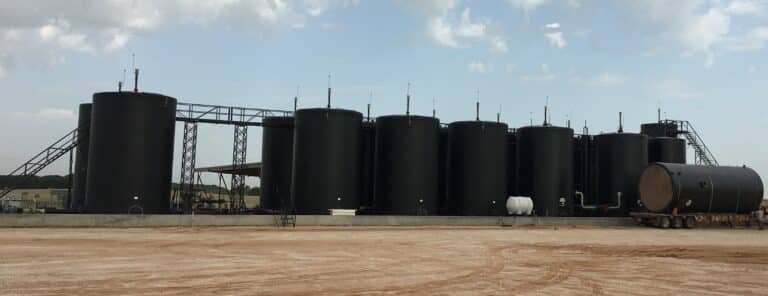Fire Safety in Storage Tanks: Preventive Measures and Strategies
Understanding the Fire Triangle: Essential Insights for Oilfield Fire Safety
The concept of the Fire Triangle is fundamental in understanding how fires start and propagate. Comprising three critical elements—heat, fuel, and oxygen—removing any of these components will effectively extinguish a fire. Despite its simplicity, the principles of the Fire Triangle are often neglected during the design and construction of oilfield facilities, leading to preventable fires.
Expanding Knowledge on Fire Dynamics in Oilfield Design
The purpose of this white paper is to enhance our comprehension of the Fire Triangle and its application in the safe design and operation of oilfield installations. By delving into the chemistry and physics of fire, we can improve our preventive measures and reduce the frequency of fire incidents in oilfields.
The Role of Natural Gas and Hydrocarbons in Fire Risks
Natural gas, commonly found above the liquid in oilfield storage tanks, poses significant fire risks if not properly managed. It will ignite only when the conditions satisfy all three elements of the Fire Triangle. Moreover, the combustibility of hydrocarbons like methane depends on their concentration in air, typically between 5% and 15%, known as the “flammability limits.”
Designing Tank Batteries
Strategic Design Choices to Prevent Fires
To prevent fires, it’s critical to manage the air intake in tanks, which involves understanding and controlling the conditions conducive to fire:
Maintaining Tank Integrity:
Keep thief hatches closed to limit air ingress, which can lead to flammable conditions.
Proper Installation and Grounding:
Ensure facilities are correctly grounded to prevent electrical sparks that could ignite gases.
Use of Flame Arrestors:
Incorporate flame and detonation arrestors in vent systems to stop the spread of flames.
Implementing Safety Measures in Tank Battery Design
In designing tank batteries for oil production, the separation of vapor from natural gas is crucial. Implementing safety measures such as vapor recovery units and ensuring consistent tank pressure can prevent the formation of flammable atmospheres.
Gas Blanketing:
Utilizing produced natural gas to blanket the vapor space in tanks keeps the vapor concentration above the upper explosive limit (UEL), preventing combustion.
Ventilation Strategies:
Connecting tanks via a common vent line and using emergency vents can control gas concentrations effectively.
Separating Vapor Spaces:
Prevent cross-contamination of vapors between oil and water tanks by using physical barriers and careful pipeline management.

Environmentally Friendly Storage Tanks
Recommendations for Enhancing Fire Safety
To mitigate fire risks effectively, operators should adhere to the following guidelines:
Regular Training:
Conduct monthly and ongoing safety training to reinforce the importance of keeping thief hatches closed.
Attention to Vent Design:
Pay meticulous attention to vent line designs, which should include flame or detonation arrestors, and pressure vacuum vent valves.
Installation of Downcomers:
Use downcomers in tanks to maintain proper vapor space separation and prevent siphoning effects that could lead to vapor mixing.
Conclusion: Toward Safer Oilfield Operations
By understanding and applying the principles of the Fire Triangle within oilfield operations, and incorporating robust design and safety practices, we can significantly reduce the likelihood of fires. This comprehensive approach not only ensures operational safety but also enhances overall efficiency in oilfield operations.
Facility Design Experts
KBK Industries has been helping oilfield companies with facility design to maximize performance and profitability. Contact us to learn more!
